Blisters may seem like minor skin irritations, but they play a crucial role in safeguarding the skin. We’ll also delve into specific dermatological conditions associated with blisters, offering insights into their symptoms and treatment options. Moreover, we’ll discuss the convenience of accessing dermatological expertise through online dermatology services in Canada. Continue reading to gain a better understanding of blisters and how to ensure your skin’s health and well-being.
Blisters Meaning: What Are Blisters?
Blisters, often described as small, fluid-filled sacs on the skin’s surface, can occur for various reasons. They are typically formed when the outer layer of the skin (the epidermis) separates from the inner layers due to friction, heat, injury, or underlying medical conditions. The fluid inside blisters serves as a protective cushion, aiding in the healing process.
The Significance of Blisters
Blisters, those small, fluid-filled sacs that appear on the skin’s surface, may seem like a mere annoyance, but in reality, they serve a crucial role in safeguarding the underlying tissue and promoting skin health. In this section, we will delve deeper into the significance of blisters and explore the various circumstances in which they can arise.
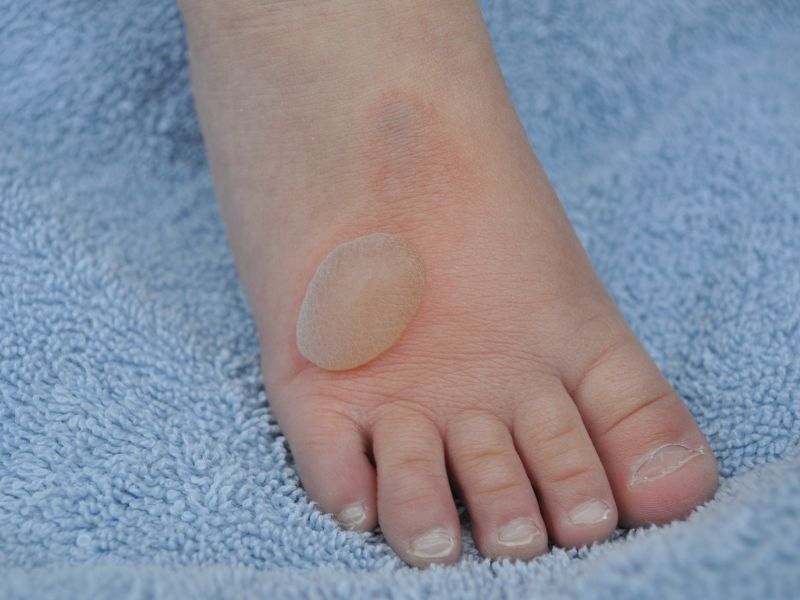
Blisters as a Protective Mechanism
Blisters, while sometimes uncomfortable, represent the body’s ingenious natural response to protect the delicate layers of skin and tissue beneath. They serve as a temporary cushioning mechanism, shielding vulnerable areas from further damage or infection. To appreciate the significance of blisters fully, let’s explore some common scenarios in which they occur:
- Friction and Pressure:
Wearing ill-fitting shoes or engaging in activities that subject the feet or hands to prolonged friction and pressure can often result in the formation of blisters. These blisters act as a barrier, reducing further rubbing and preventing potential wounds.
- Burns and Heat:
Exposure to excessive heat or contact with scorching objects can lead to blister development. This is the body’s way of responding to thermal stress, creating a buffer of fluid-filled sacs to minimize damage and promote healing.
- Chemical Irritants:
The skin’s sensitivity varies from person to person, and contact with certain chemicals or plants can trigger a reaction. In such cases, blisters may form as a response to chemical irritants, effectively isolating the affected area and preventing further harm.
- Infections:
Blisters can also manifest as a result of infections, both bacterial and viral. Conditions like impetigo and herpes are notable examples. These infections incite blister formation as part of the body’s defence mechanism, containing the invaders and facilitating the body’s immune response.
As we proceed to explore specific dermatological conditions associated with blisters and delve into their meanings and management, keep in mind that the presence of blisters often signifies an underlying issue that requires attention and care. Whether due to friction, burns, chemical exposure, or infections, blisters serve as both a signal and a shield, prompting us to take heed of our skin’s needs and seek the appropriate measures for healing and recovery.
Common Dermatological Conditions Associated with Blisters
When it comes to dermatological conditions that are frequently associated with the development of blisters, it’s essential to have a comprehensive understanding of each condition. In this section, we’ll delve deeper into four specific dermatological conditions, starting with dermatitis herpetiformis.
Dermatitis Herpetiformis
Dermatitis herpetiformis is a chronic skin condition that exhibits a noteworthy link to gluten intolerance, which is often intertwined with celiac disease. Despite its name suggesting a connection to the herpes virus, it’s crucial to clarify that dermatitis herpetiformis is entirely unrelated to this viral infection. In individuals affected by dermatitis herpetiformis, blisters typically manifest in clusters and are characterized by their intensely itchy nature.
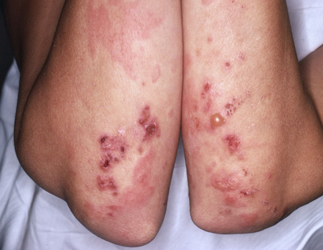
Symptoms of Dermatitis Herpetiformis:
- An incessantly itchy and discomforting blistering rash.
- Blisters that contain a clear fluid, often cause additional discomfort.
- Skin that becomes noticeably red and inflamed in the areas affected by the rash.
Treatment for Dermatitis Herpetiformis:
The primary course of treatment for dermatitis herpetiformis hinges on implementing a strict gluten-free diet. This dietary adjustment is integral to managing the condition effectively. Furthermore, medical intervention may be necessary to alleviate the rash and itching. Dermatologists may prescribe specific medications tailored to the individual’s needs.
Contact Dermatitis
Contact dermatitis, another prominent dermatological condition, is an inflammatory skin disorder triggered by direct contact with irritants or allergens. In cases where contact dermatitis takes root, it can culminate in the development of blisters, contributing to localized irritation.
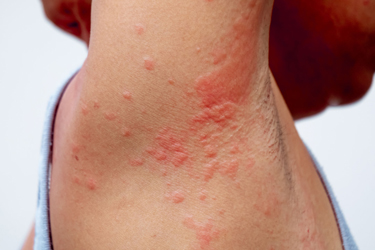
Symptoms of Contact Dermatitis:
- The emergence of an intensely itchy rash accompanied by blisters.
- Redness and noticeable swelling in the affected areas.
- A burning or stinging sensation that exacerbates the discomfort.
Treatment for Contact Dermatitis:
Effectively managing contact dermatitis necessitates the identification and avoidance of the specific substances responsible for triggering the condition. In cases where symptoms persist, dermatologists often recommend topical corticosteroids and antihistamines as part of the treatment regimen, aimed at providing relief from the associated discomfort.
Impetigo
Impetigo, a highly contagious bacterial skin infection, predominantly afflicts children, although it can affect individuals of any age. The condition typically commences with the appearance of red sores that subsequently burst, releasing fluid and resulting in the formation of honey-coloured crusts or blisters.
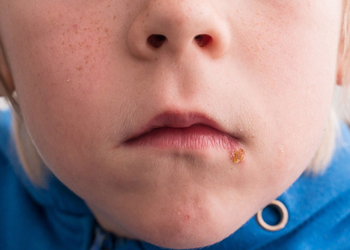
Symptoms of Impetigo:
- The development of honey-coloured blisters or sores can be quite discomforting.
- Persistent itching and general discomfort in the affected areas.
- Swelling of the nearby lymph nodes is indicative of the body’s immune response.
Treatment for Impetigo:
Effectively treating impetigo necessitates the administration of antibiotics, either in topical or oral form, as prescribed by a healthcare professional. Additionally, practising proper hygiene and wound care is paramount to prevent the spread of the infection.
Herpes
Herpes, caused by the herpes simplex virus (HSV), is a viral infection that can lead to the formation of painful blisters. These blisters can manifest both on the mouth, resulting in oral herpes, and in the genital area, leading to genital herpes.
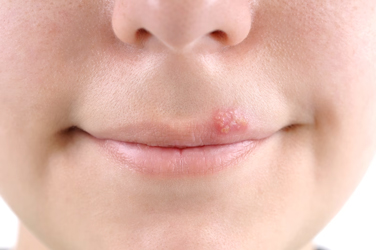
Symptoms of Herpes:
- Painful blisters that are filled with either clear or yellowish fluid.
- Tingling or burning sensations often precede the outbreak.
- During the initial infection, flu-like symptoms such as fever and malaise may occur.
Treatment for Herpes:
Managing herpes outbreaks involves the use of antiviral medications, which can effectively reduce the severity and duration of symptoms. Seeking prompt medical attention and adhering to prescribed treatment regimens are crucial steps in managing herpes effectively.
To summarize, understanding these dermatological conditions associated with blisters is critical for accurate diagnosis and treatment. If you suspect you have any of these conditions, seeking professional medical advice and guidance is strongly advised for personalized care and support.
When to See a Dermatologist for Blisters
Blisters, though often harmless and a natural response to various triggers, can sometimes indicate underlying skin conditions that warrant professional evaluation and care. Knowing when to consult a dermatologist is pivotal in ensuring your skin’s health and well-being.
Persistent or Recurring Blisters
If you experience blisters that persist for an extended period or reoccur frequently without an apparent cause, it’s advisable to seek the expertise of a dermatologist. These could be indicative of an underlying skin condition or a chronic issue that necessitates proper diagnosis and management.
Unexplained Blisters
When blisters appear suddenly without any known cause, it’s essential to consult a dermatologist. Unexplained blisters can be a sign of allergies, infections, or autoimmune disorders that require prompt attention and treatment.
Large or Painful Blisters
Blisters that are unusually large or exceedingly painful should not be ignored. These may require medical intervention, as they could be linked to more severe conditions or infections.
Blisters Accompanied by Other Symptoms
If your blisters are accompanied by other concerning symptoms, such as fever, severe itching, or changes in the appearance of your skin, consulting a dermatologist is imperative to rule out any serious underlying issues.
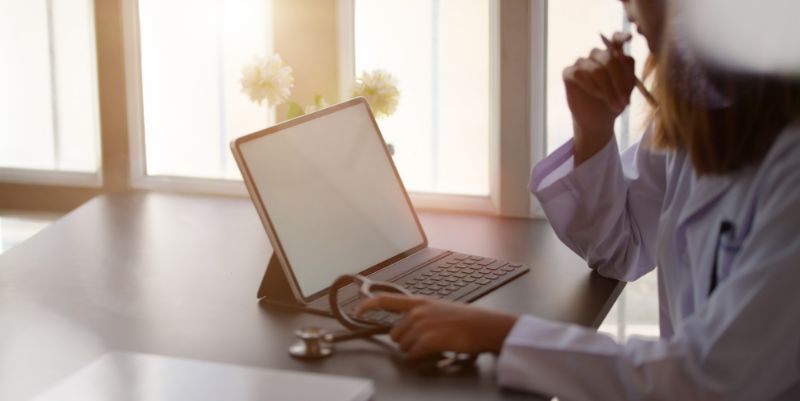
In Canada, accessing dermatological expertise has become more convenient through online dermatology services. Online Dermatology Canada offers a hassle-free way to connect with experienced dermatologists who can evaluate your condition, provide guidance, and recommend appropriate treatments or referrals for further assessment. Don’t hesitate to reach out to a dermatologist if you have concerns about your blisters, as early intervention can lead to effective management and better skin health.
Final Thoughts
In concluding our exploration of blisters, their meanings, and associated dermatological conditions, it’s essential to underscore the significance of timely care and attention to your skin’s health. Blisters, often considered a mere inconvenience, can serve as crucial indicators of underlying issues that warrant professional evaluation. Whether you’re grappling with persistent, painful blisters or experiencing unexplained outbreaks, seeking the expertise of a dermatologist is a proactive step towards maintaining your skin’s well-being. The dermatological conditions we’ve discussed, including dermatitis herpetiformis, contact dermatitis, impetigo, and herpes, emphasize the diverse nature of blister-related concerns. Understanding the symptoms and available treatments for these conditions empowers individuals to make informed decisions about their health and seek appropriate care when necessary.
In the world of dermatology, knowledge is your ally. Armed with a deeper understanding of blisters and their meanings, you can now take charge of your skin health with confidence. Remember that early intervention and professional guidance are the keys to managing skin conditions effectively, ensuring that your skin remains resilient and vibrant.
FAQs
- Is it safe to pop a blister?
It’s generally best to avoid popping blisters as it can increase the risk of infection. Let them heal naturally when possible.
- What’s the best way to care for a blister at home?
Keep the blister clean and protected with a sterile bandage. Avoid popping it, and if it bursts, apply an antibiotic ointment and cover it.
- Can I exercise with blisters?
It’s advisable to avoid vigorous exercise that may worsen the friction on the blistered area until the blister heals.
- Can blisters develop on the lips from sun exposure?
Yes, prolonged sun exposure without protection can lead to lip blisters, commonly known as sunburn blisters.
